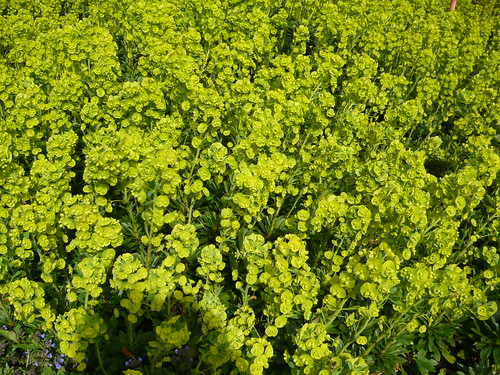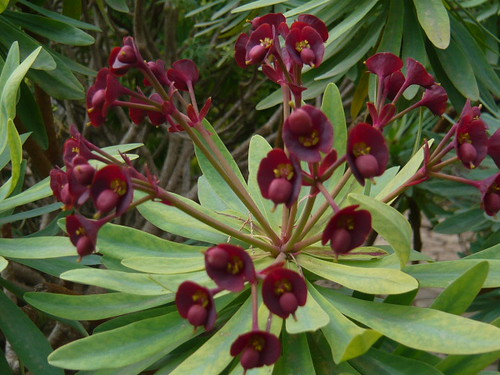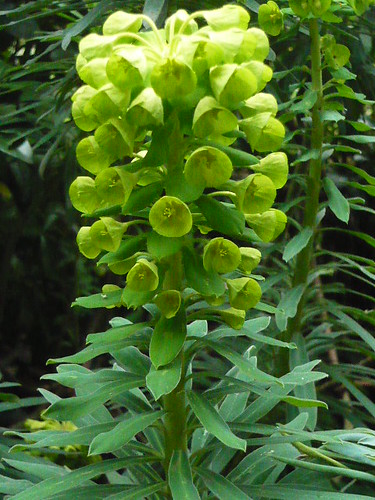Flower Arranging – Euphorbia
Growing Euphorbia for Flower Arrangements
- Spurge, Milkweed or Euphorbia is a genus of hardy shrubs, succulents and perennials that are striking in appearance and invaluable in the garden or for flower arranging.
- Leaves are usually lance shaped and stems contain a milky sap that can irritate your skin.
- Varieties to grow for flower arranging include;
Euphorbia amygdaloides robbiae with evergreen rosettes of dark green leaves and lime green bracts.
Euphorbia amygdaloides purpurea a marooon stemed variety.
Euphorbia characias wulfenii with blue green leaves that grow up to 4 feet.
Euphorbia polychroma with bright yellow bracts.
Euphorbia myrsinites is a prostrate form with grey glacous leaves
Euphorbia griffithii is a hardy perennial that dies down each winter but young foliage is reddish green and the flowers are orange-red. - These plants are interesting and easy to grow and add shape and texture to your garden.
Special Tips for Flower Arranging with Euphorbia
- Do not cut when the Euphorbia are too immature or the stems will wilt.
- Cut stems must immediately be sealed by flame to stop sap oozing out.
- Resinge or reseal if you trim the ends when re-cutting.
- Vase life should be 7-10 days if conditioned in a bucket of water overnight first.
A full array of books on Flower Arranging and related subjects is available from Amazon. You will find more advice and artistic inspiration amongst this selection.
I would also recommend horticultural flower shows where I am always stunned by the floral arrangement amongst the plants on display.
Top Ten Euphorbia selected from a range of a over 2000 varieties in the genus.
Euphorbia are a wide range of plants many of which are suitable for flower arranging where the bracts and leaves both add interest.
Turn your arrangements into botanical works of art – here are some examples and clubs you could join.
To grow a generic mix of flowers for arrangements and bouquets check out Thompson & Morgan
Other plants in this series
Dahlia
Pittosporum
Alstroemeria
Fatsia Japonica
Corkscrew hazel
Phormium




2 thoughts on “Flower Arranging – Euphorbia”
Comments are closed.